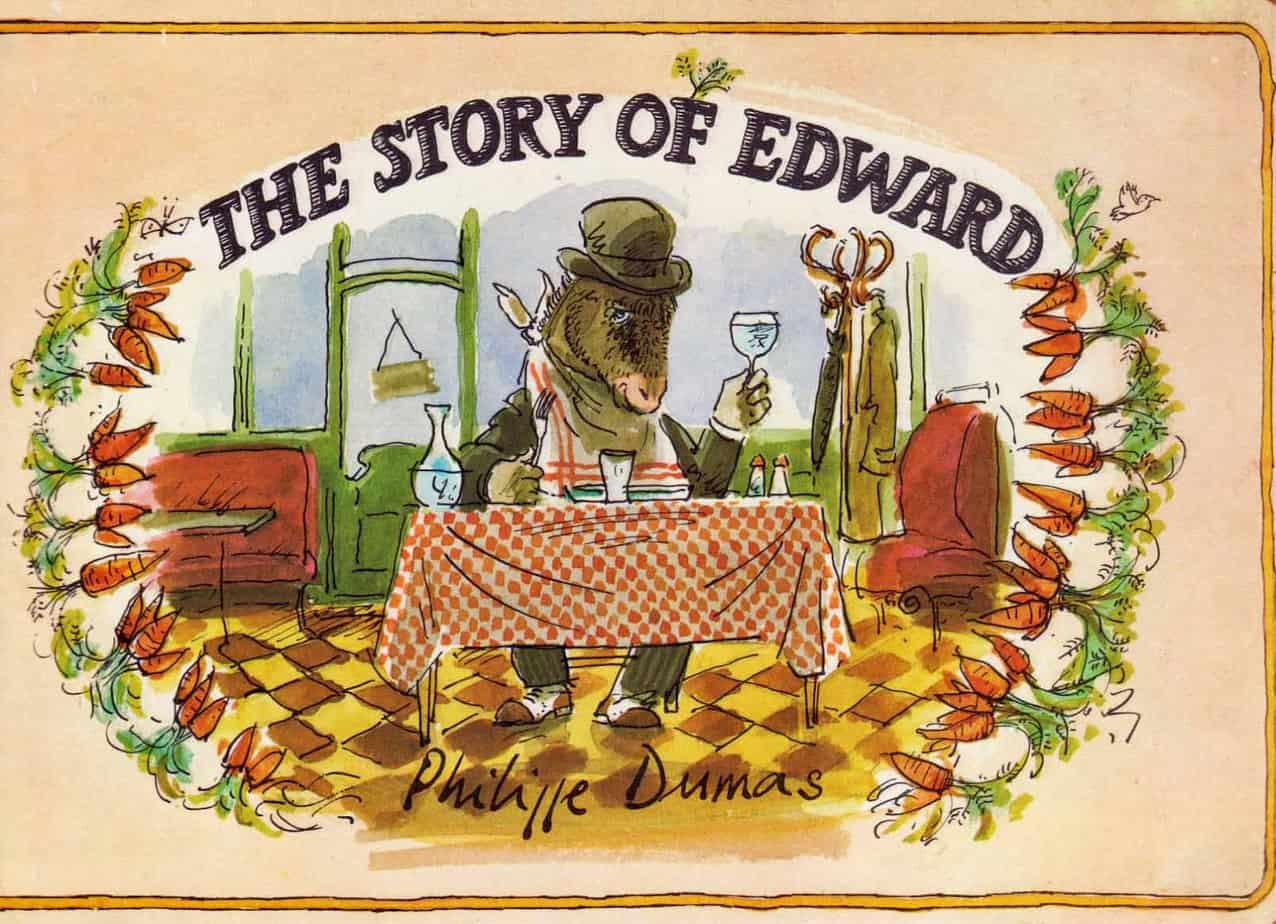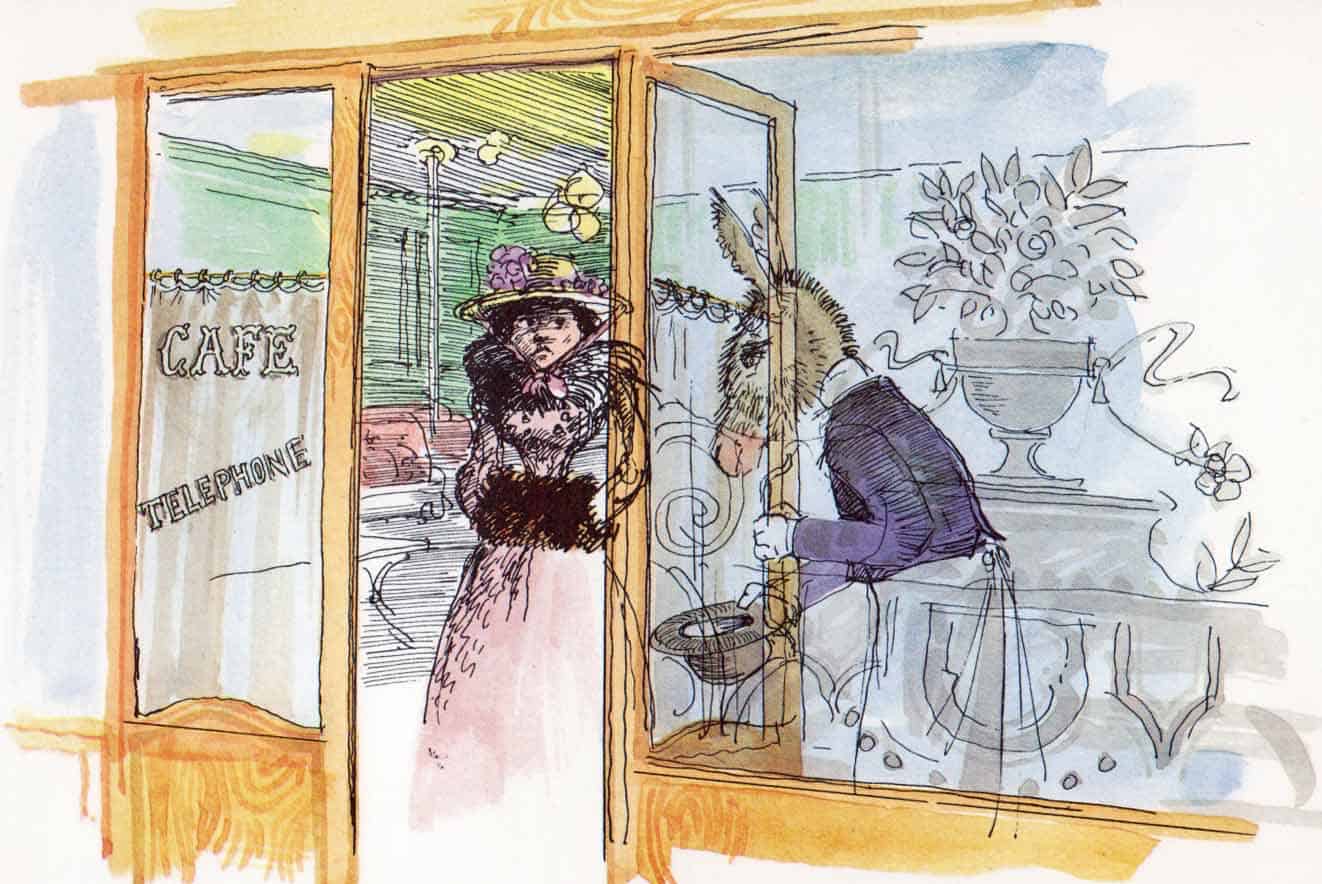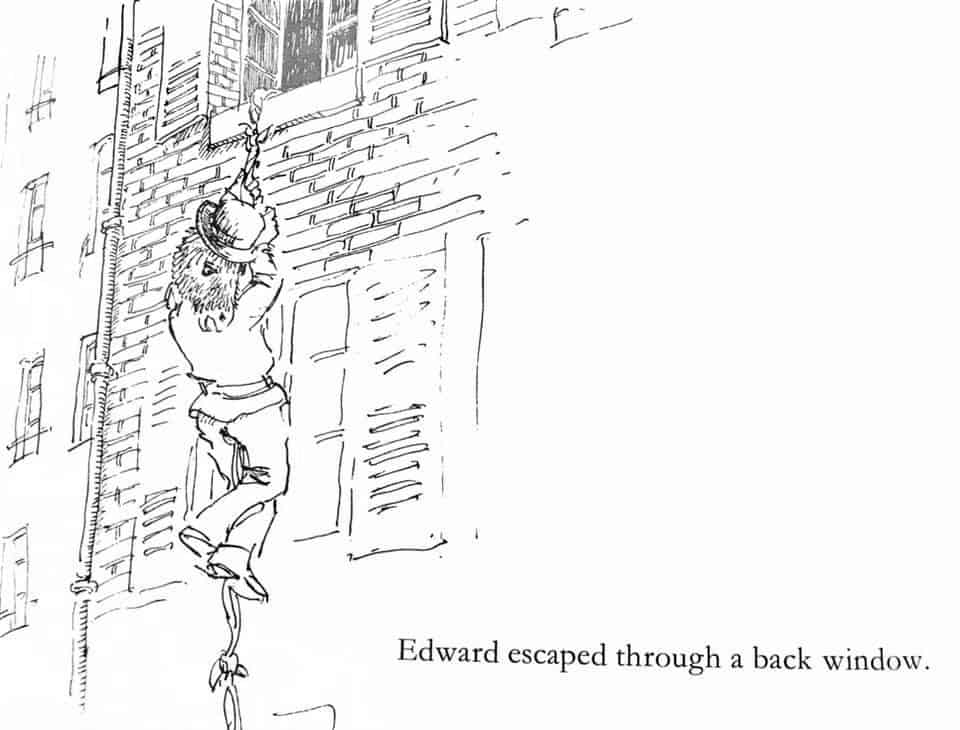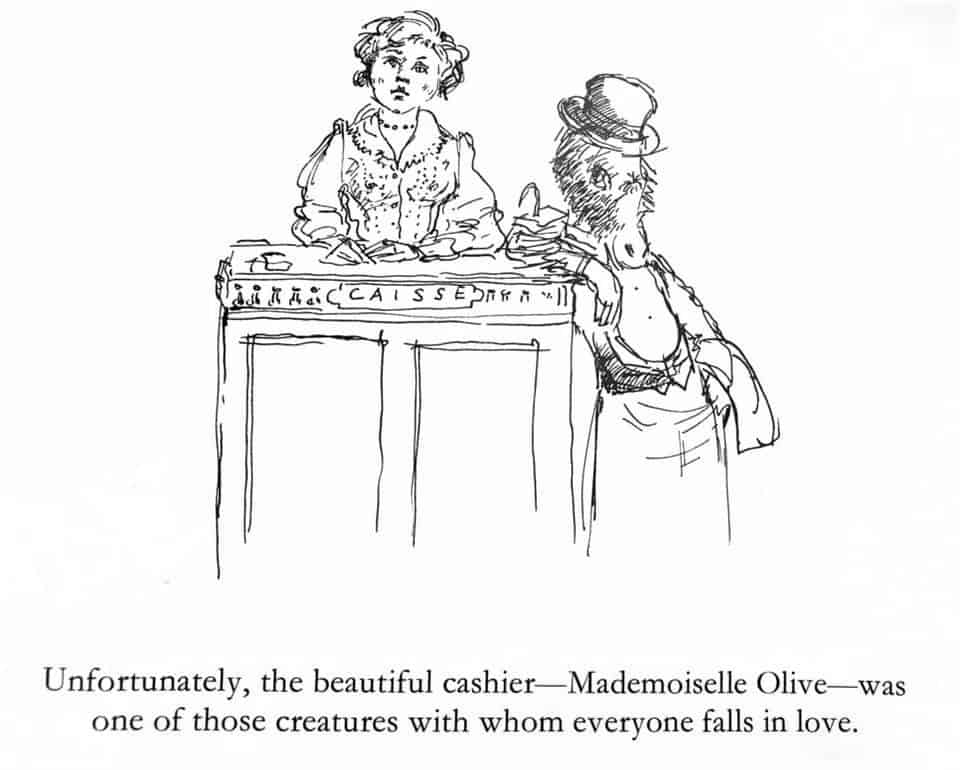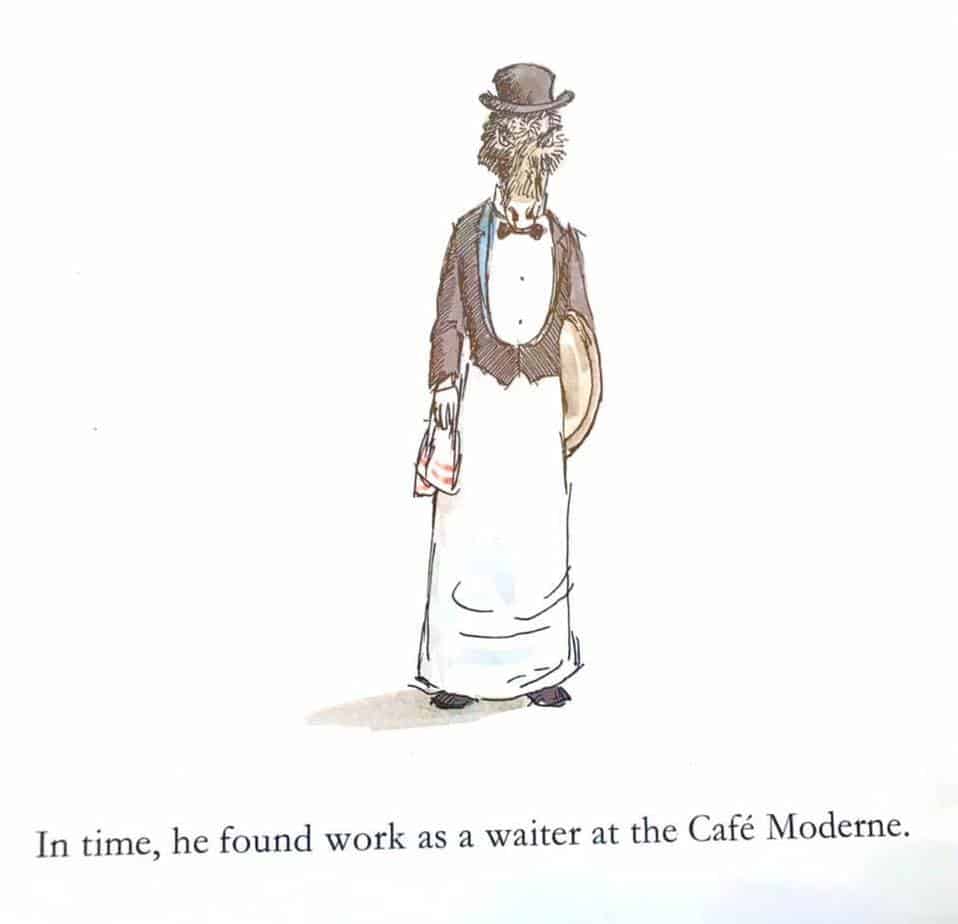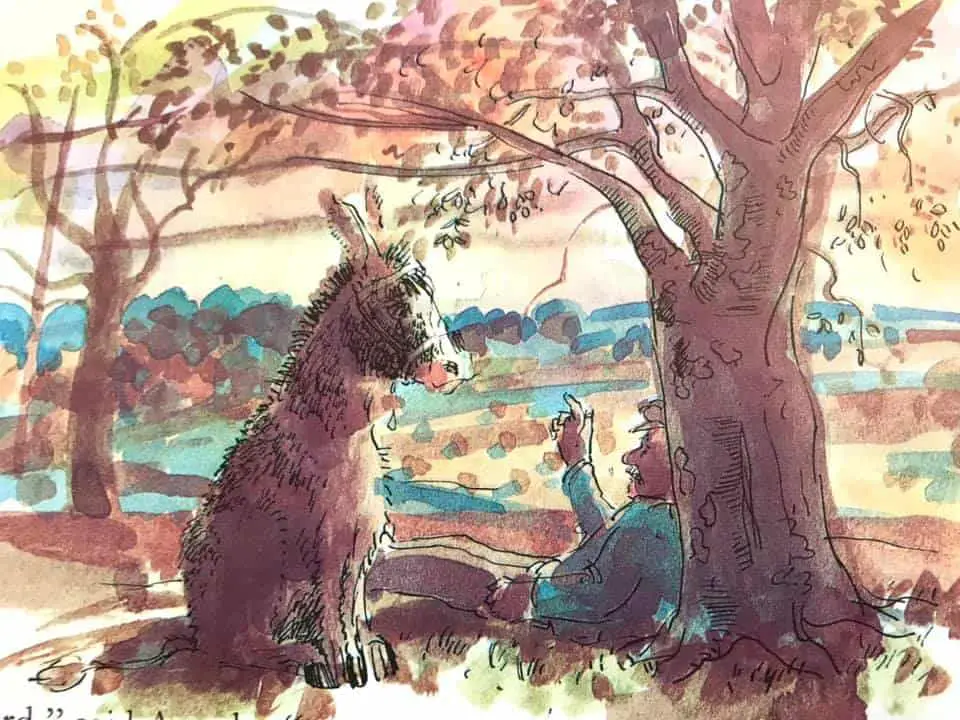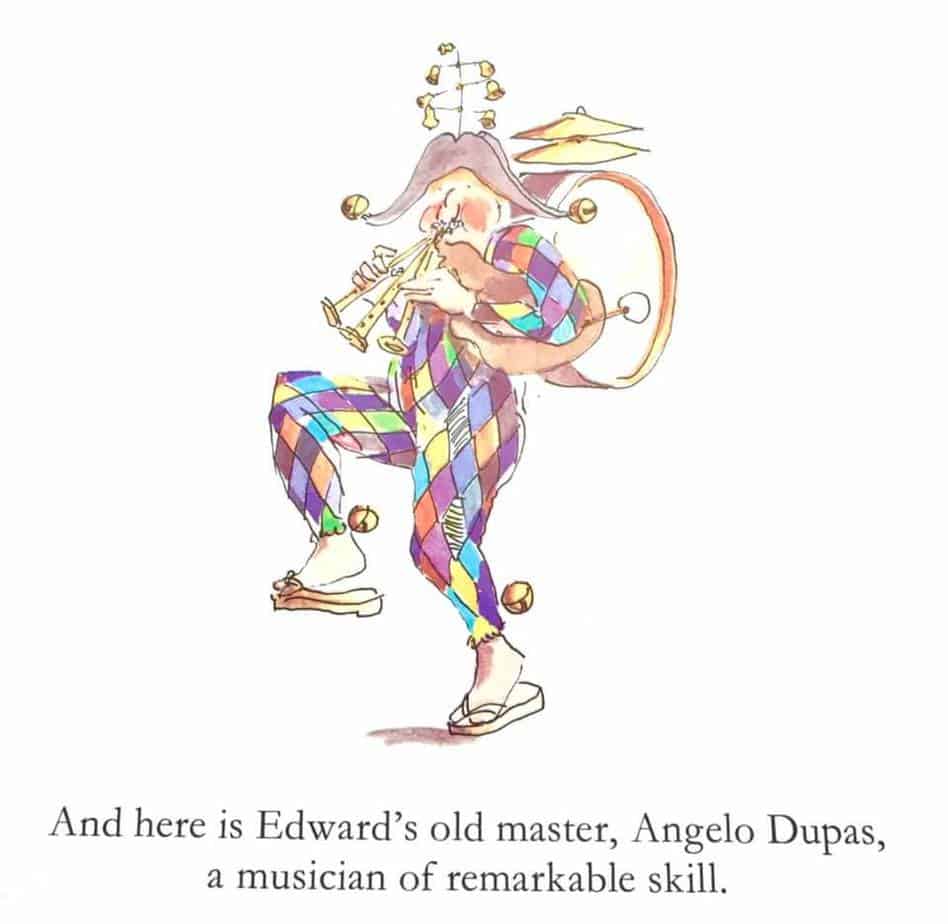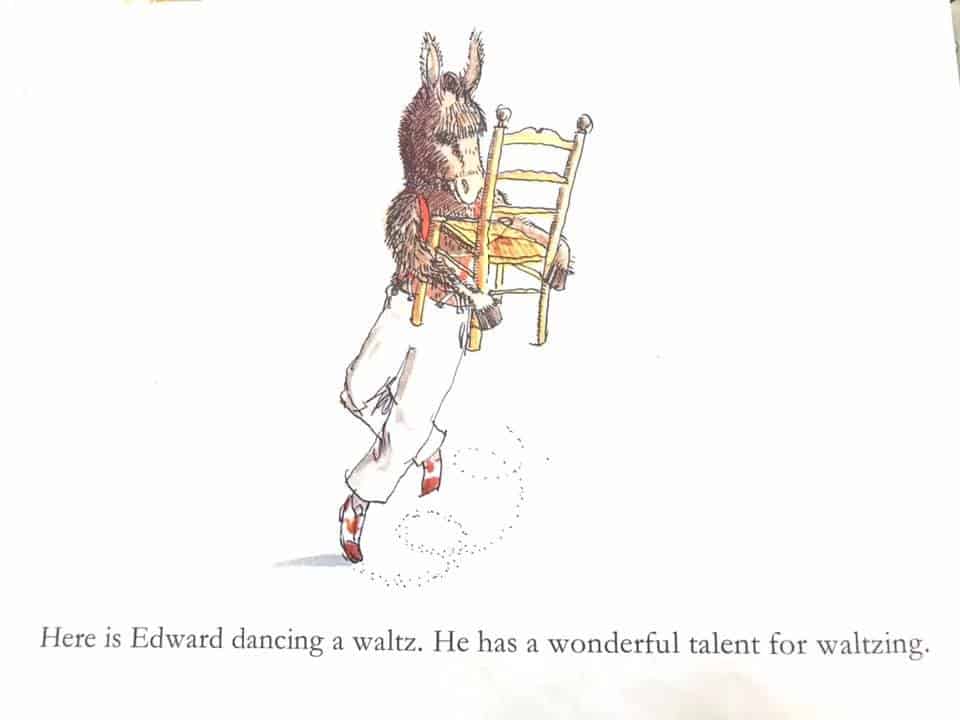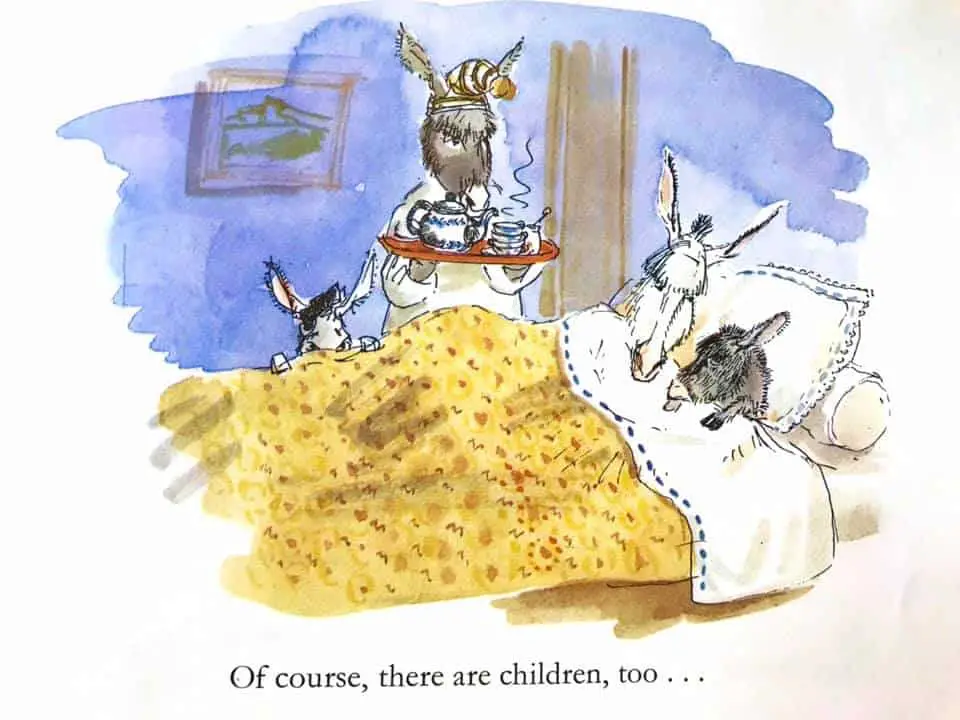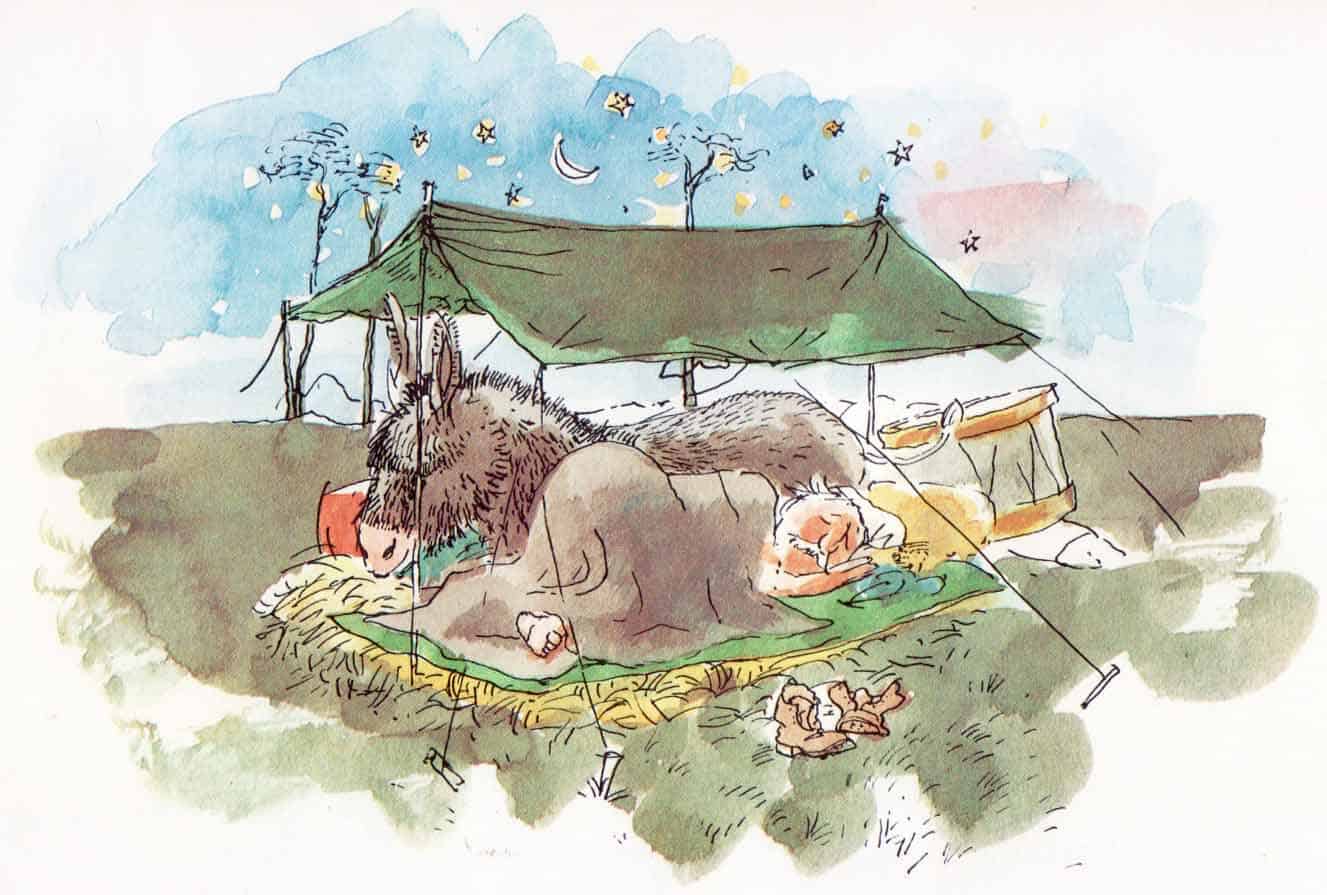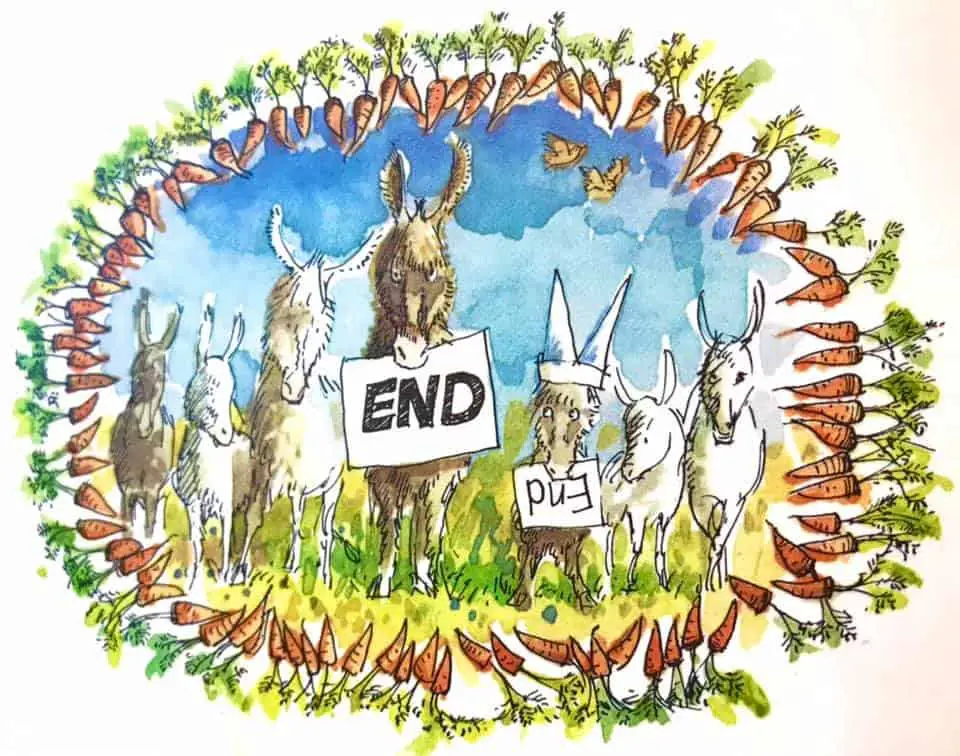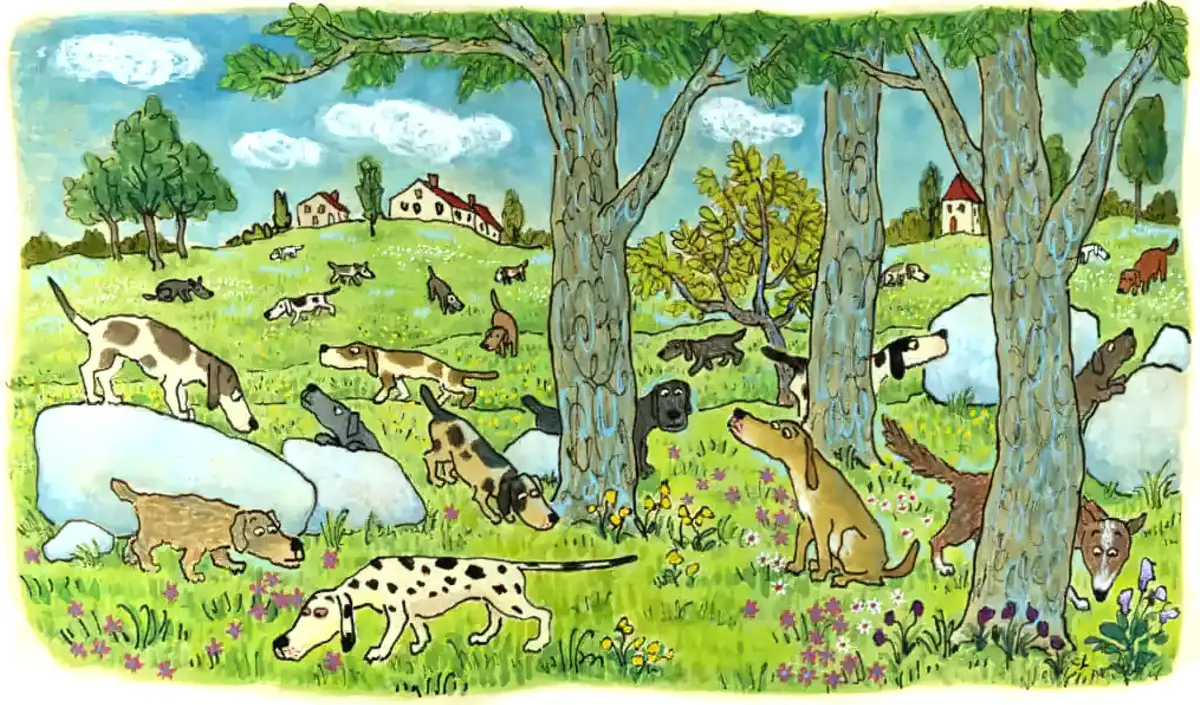“Sylvester and the Magic Pebble” is a heartwarming picture book written and illustrated by William Steig, published by Windmill Books, Simon & Shuster, New York, 1969. This book won the Caldecott Medal in 1970. Steig wrote picture books in a comically melodramatic way, which is one way of appealing to the dual audience of children and adult co-readers. Here’s a useful thing about melodrama: The audience can know it’s melodrama but still be moved.
SETTING OF SYLVESTER AND THE MAGIC PEBBLE
The characters of Sylvester and the Magic Pebble live in a village or town in a pastoral environment. The animals are humans in animal form, and even keep animals of their own. (The front cover tells us the animals keep chickens, for instance.)
How does Steig achieve melodrama? It’s partly to do with the setting. When showing the passing of time, Steig takes the reader through the seasons, making use of the pathetic fallacy of snow and cold to signify Sylvester’s loneliness as a sleeping rock. But he takes it one step further. A wolf comes and sits on the rock and howls. This image is so mournful, so ridiculously mournful, but works.
STORY STRUCTURE OF SYLVESTER AND THE MAGIC PEBBLE
PARATEXT
One rainy day, Sylvester finds a magic pebble that can make wishes come true. But when a lion frightens him on his way home, Sylvester makes a wish that brings unexpected results.
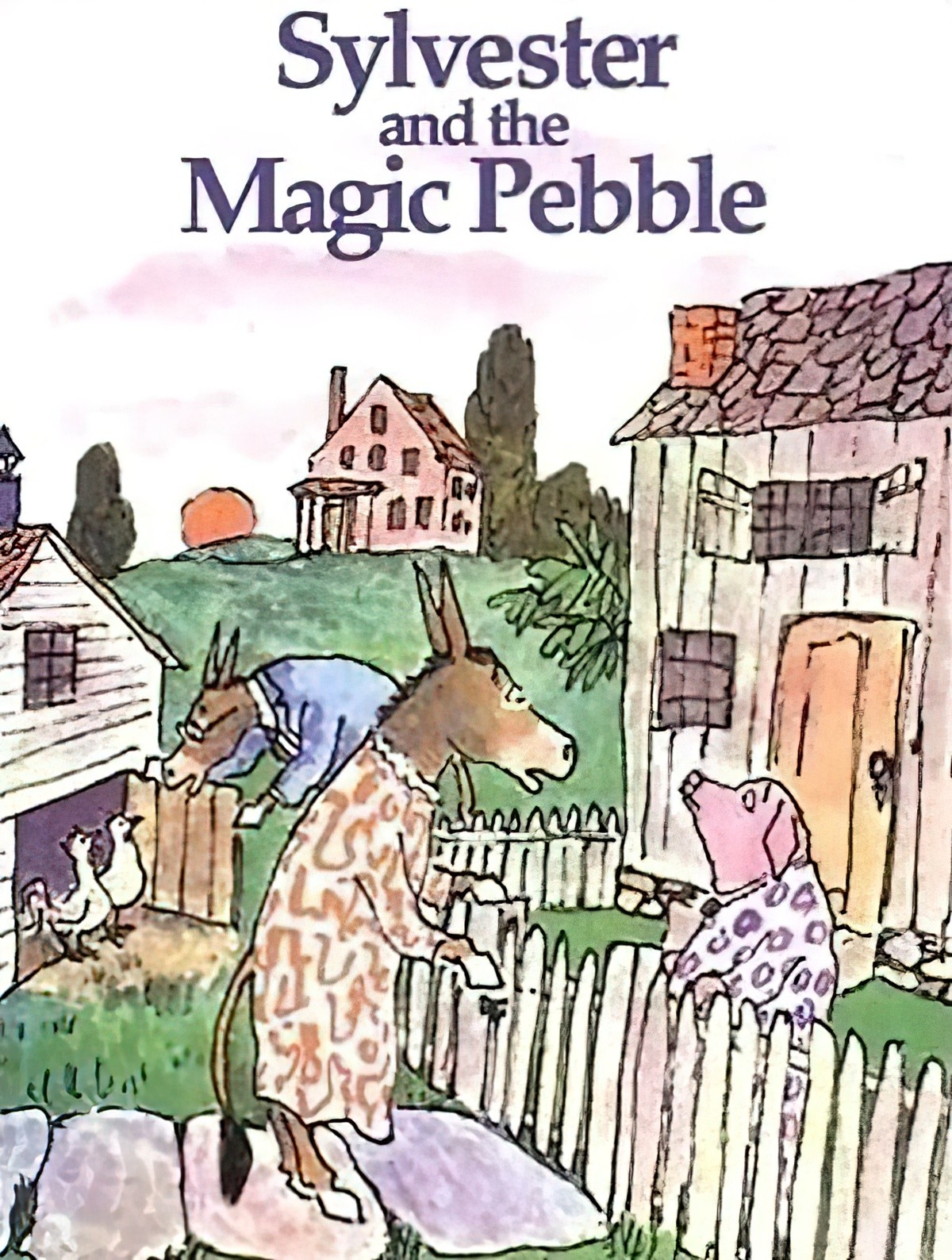
SHORTCOMING
In a typically melodramatic story, the main character isn’t especially proactive. Things happen to them. Likewise, Sylvester doesn’t mean to control the weather when he picks up the magic pebble and makes the wish.
Any reader of fairytales will know that magic wishes are dangerous. Either the wisher succumbs to their inherent greediness or cosmic fate will step in to punish them. The message is consistent across time and narrative: Wishing is no good; positive action is will be your reward.
See for instance The Foolish Wishes as recorded by Charles Perrault. Annie Proulx plays with the concept in “Dump Junk“.
DESIRE
Because things happen to a melodramatic character, Sylvester doesn’t have any strong desire which kicks the story off, but as the narrative unfolds, Sylvester has one strong wish: to return to his family as a donkey.
OPPONENT
Wishing magic.
As part of the opposition web, everyone who searches for Sylvester without finding him also functions as an opponent. It is especially vexing (in a melodramatic way) when the sniffer dog comes so close to Sylvester in rock form.
PLAN
This story is a great case study in answer to the question, “But what if my main character has no plan?” Or, “What if my main character is trapped and cannot make a plan to escape?”
Sylvester is a rock, peak entrapment. What does William Steig do? He switches point of view. The focus expands first to the mournful parents, then to the village, then to the policeman pigs and the sniffer dogs. The plans of trying to find Sylvester become the story.
Someone in a story has to make plans. It doesn’t have to be the ‘main character‘.
THE BIG STRUGGLE
Steig uses the weather to indicate Sylvester’s harsh stuggle of being a rock. Meanwhile, his parents mourn. The illustrations show the mother crying. This plays into a child’s fantasy very well. As children we all like to think that if we disappeared, our family would miss us terribly. Most children consider running away at some point, partly to test this theory. This story lets the child imagine what it would be like to be away from family. But the sight of the mourning parents is an expression of love, and is ultimately reassuring rather than harrowing.
When the dog, then the wolf come close to ‘finding’ Sylvester, this is Steig making use of the Rule of Three, because the next characters to find him will fix him.
ANAGNORISIS
Coincidentally, Sylvester’s parents set off on a picnic and just so happen to go to the exact hill where Sylvester turned into a rock. Not only that, they use him as a picnic table.
Steig isn’t overly concerned about coincidence, but he does lampshade it when Sylvester thinks the chances of someone both finding the pebble and wishing the nearby rock were a donkey would be less than one in a billion.
He then shows the passing of time, which makes the concidence of his parents picnicking on Strawberry Hill a little less of a coincidence.
Also, a comically melodramatic story can bear a little coincidence quite happily.
NEW SITUATION
Sylvester goes home with his parents who love him very much. Earlier, the mother said that if he came back she would never scold him again, which plays into another wish fulfilment fantasy typical of children.
So long as your set-up is good, scenes where long-lost loved ones reunite are always moving.
EXTRAPOLATED ENDING
I don’t imagine Sylvester went entirely unscolded forever.
RESONANCE
Sylvester and the Magic Pebble has become a classic, and the most popular book of a popular author-illustrator. It is also intermittently banned because the police are in the shape of pigs.
A storyboard of Sylvester and the Magic Pebble
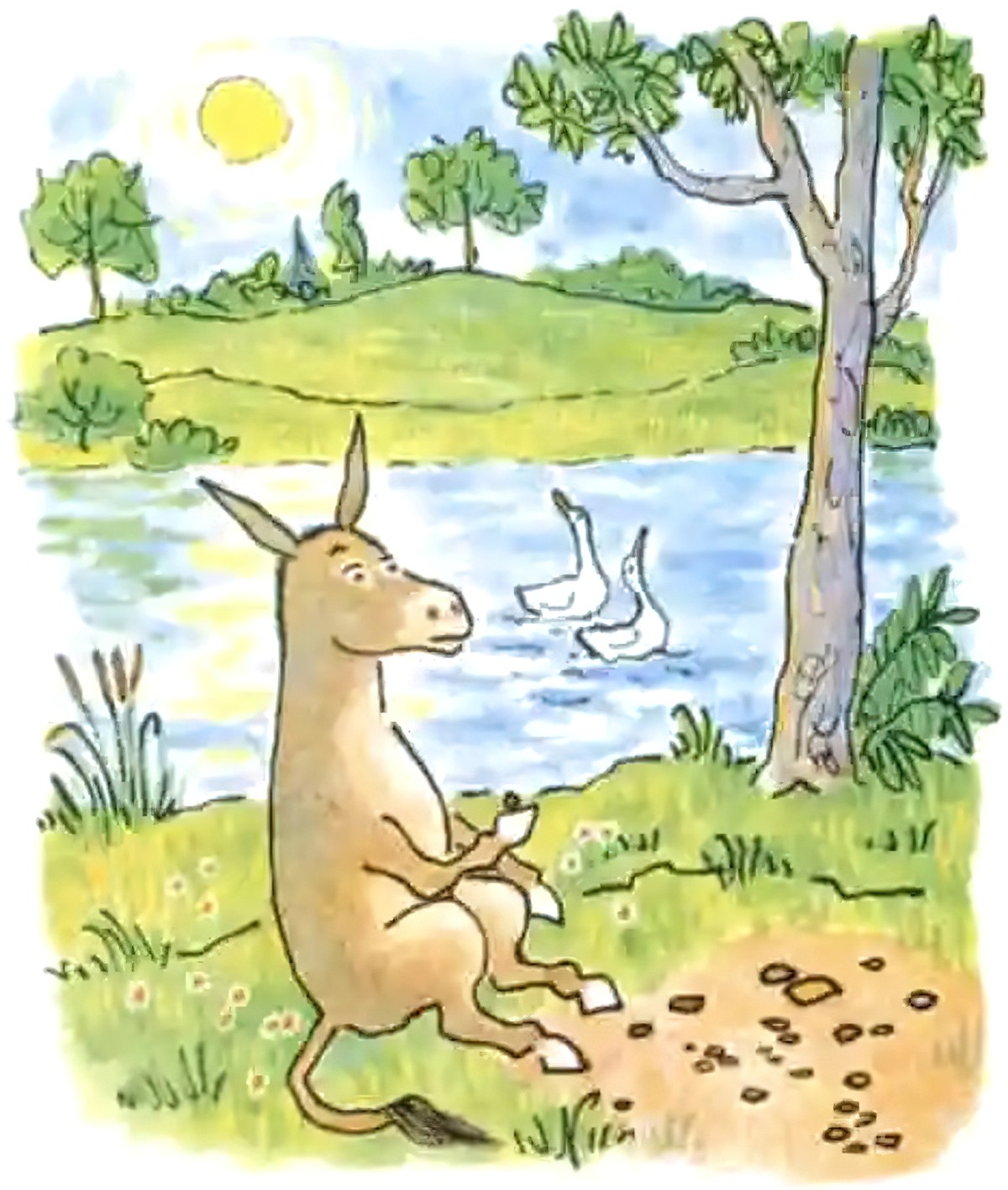
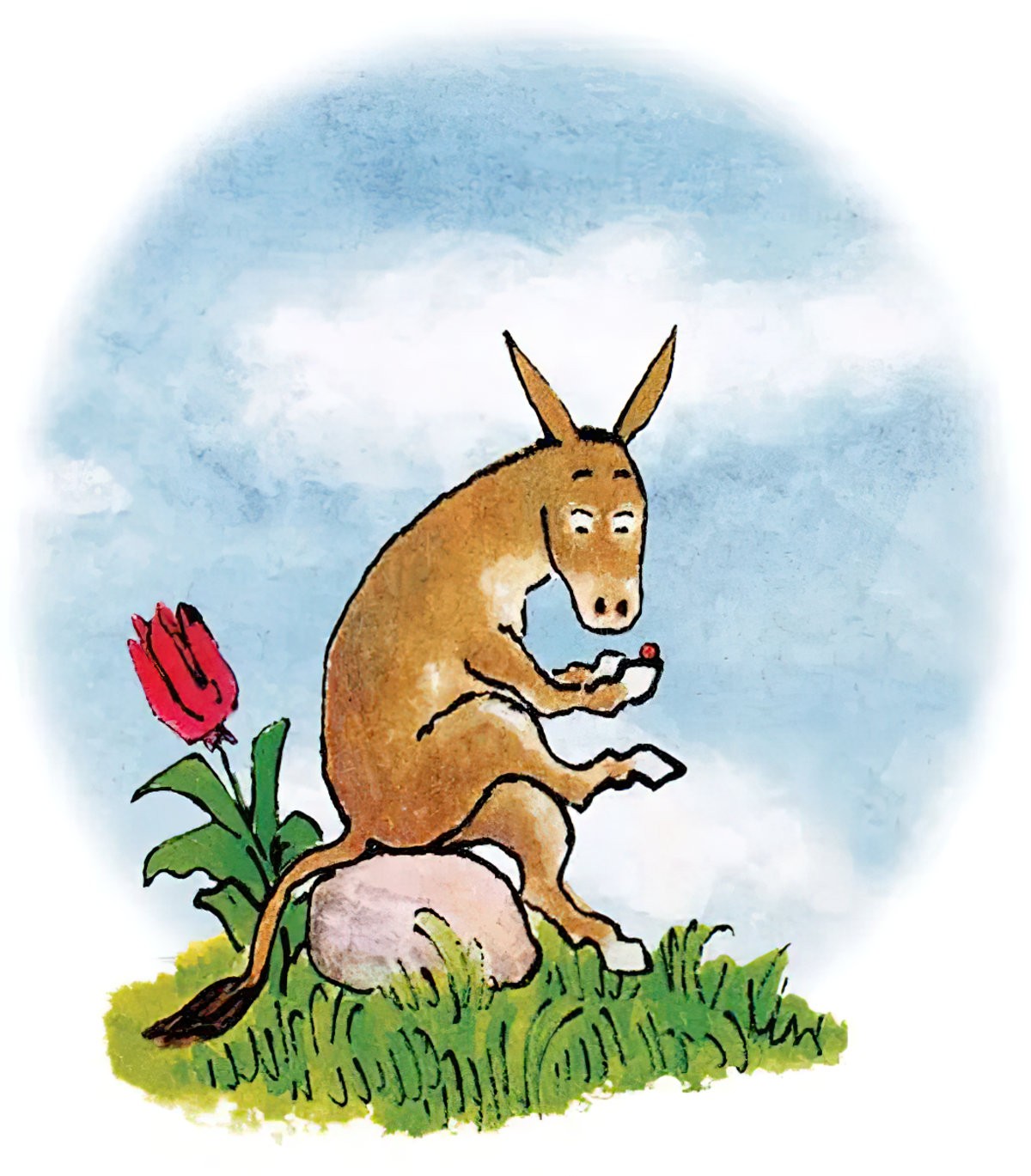
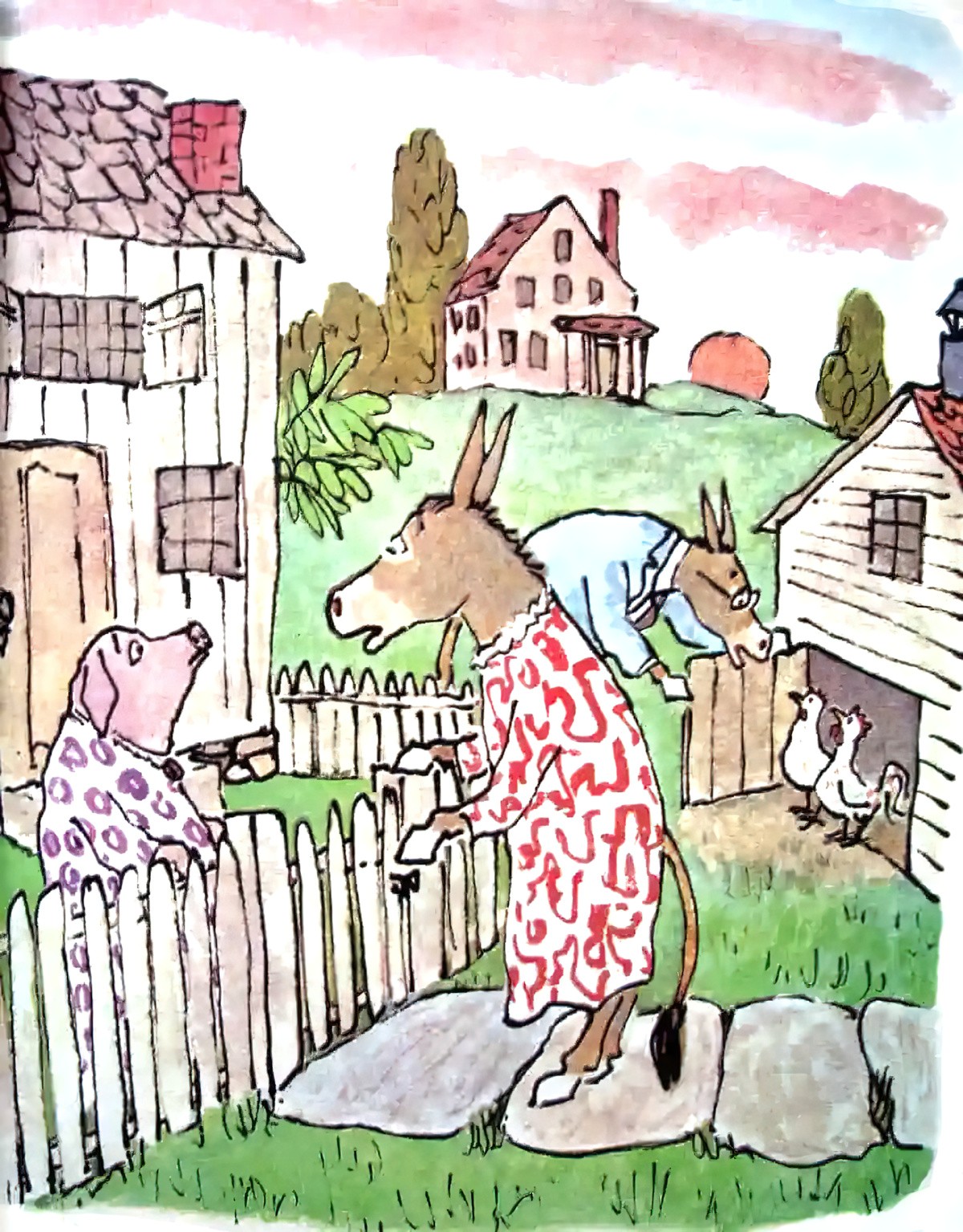
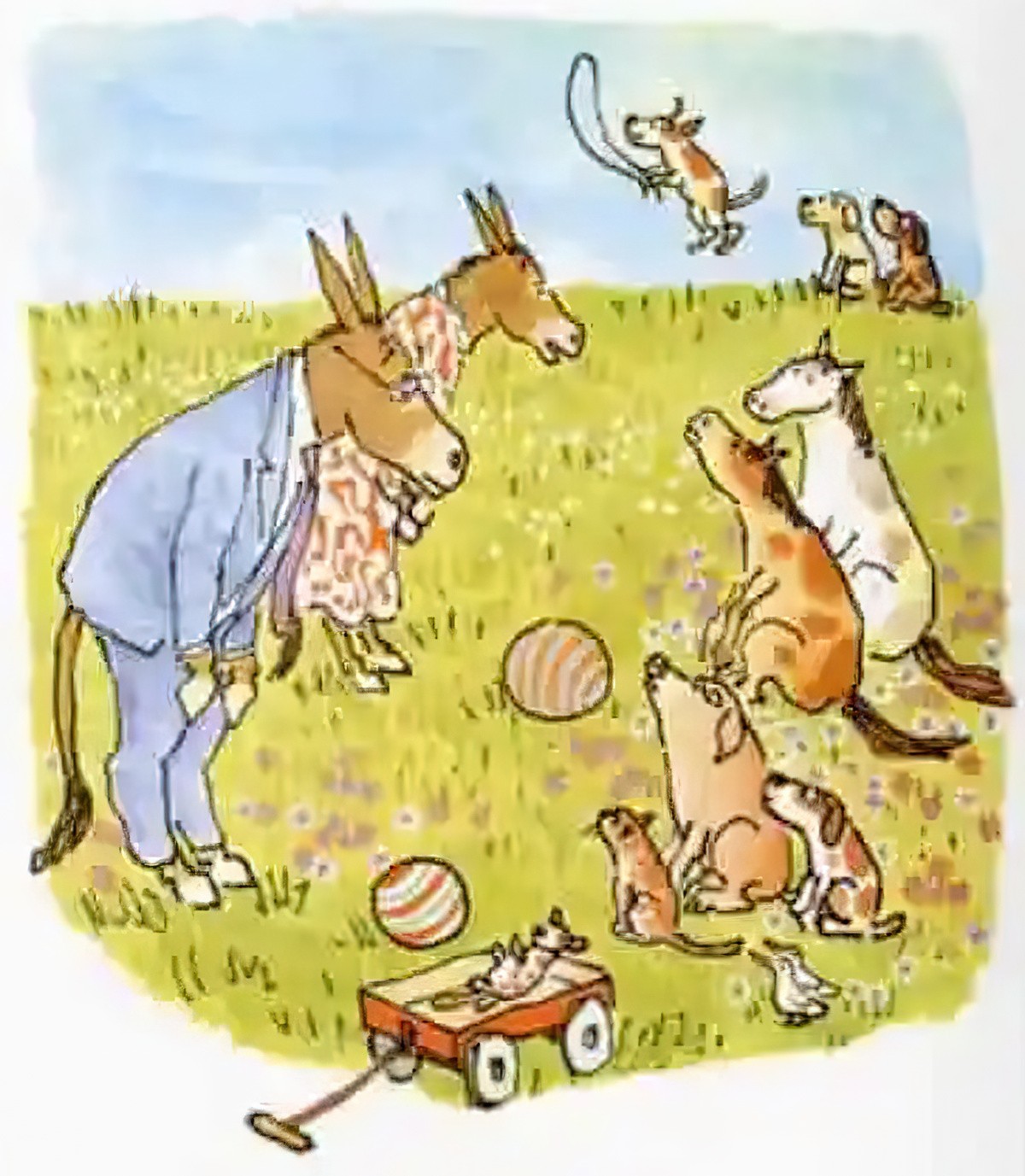
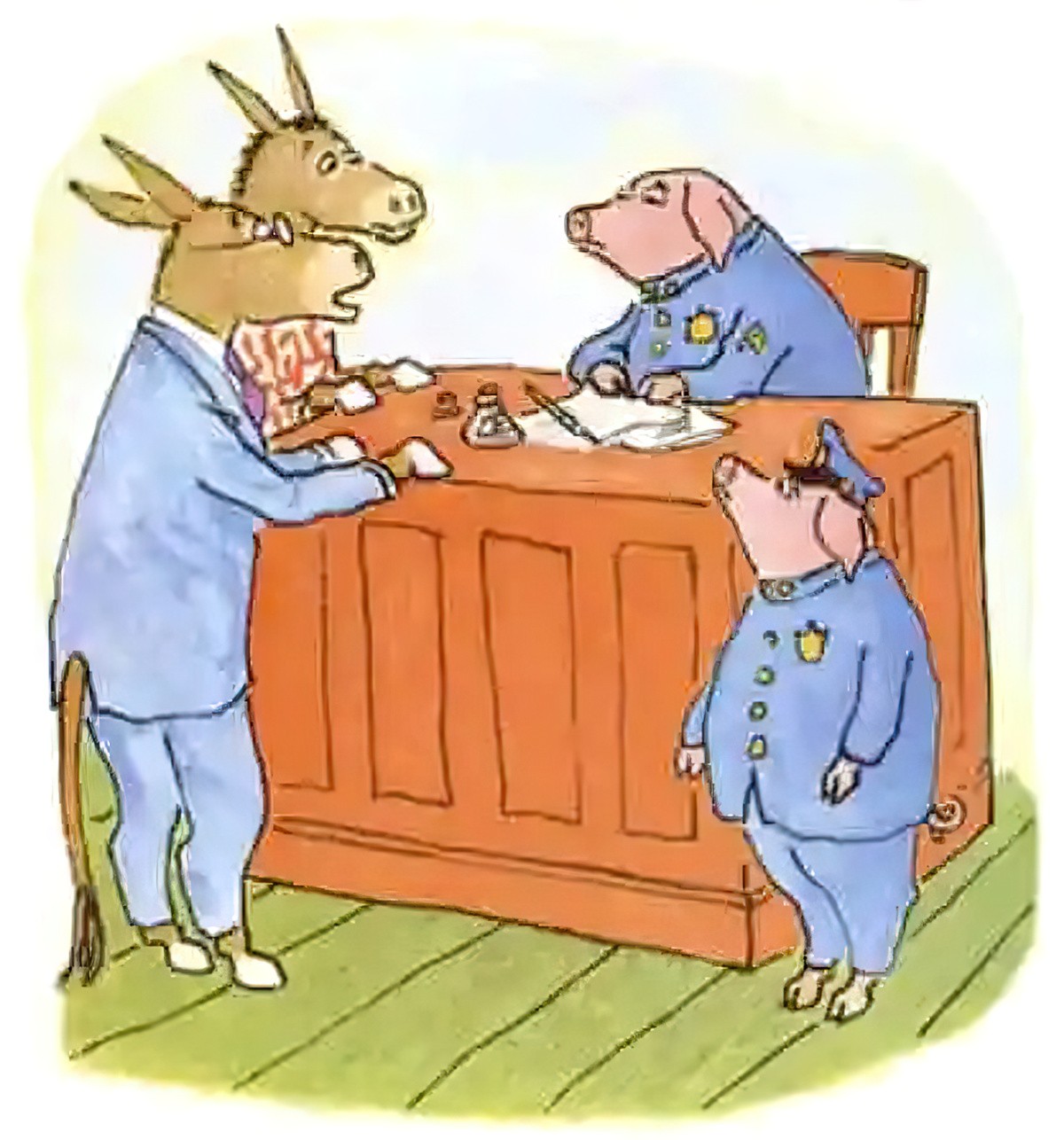
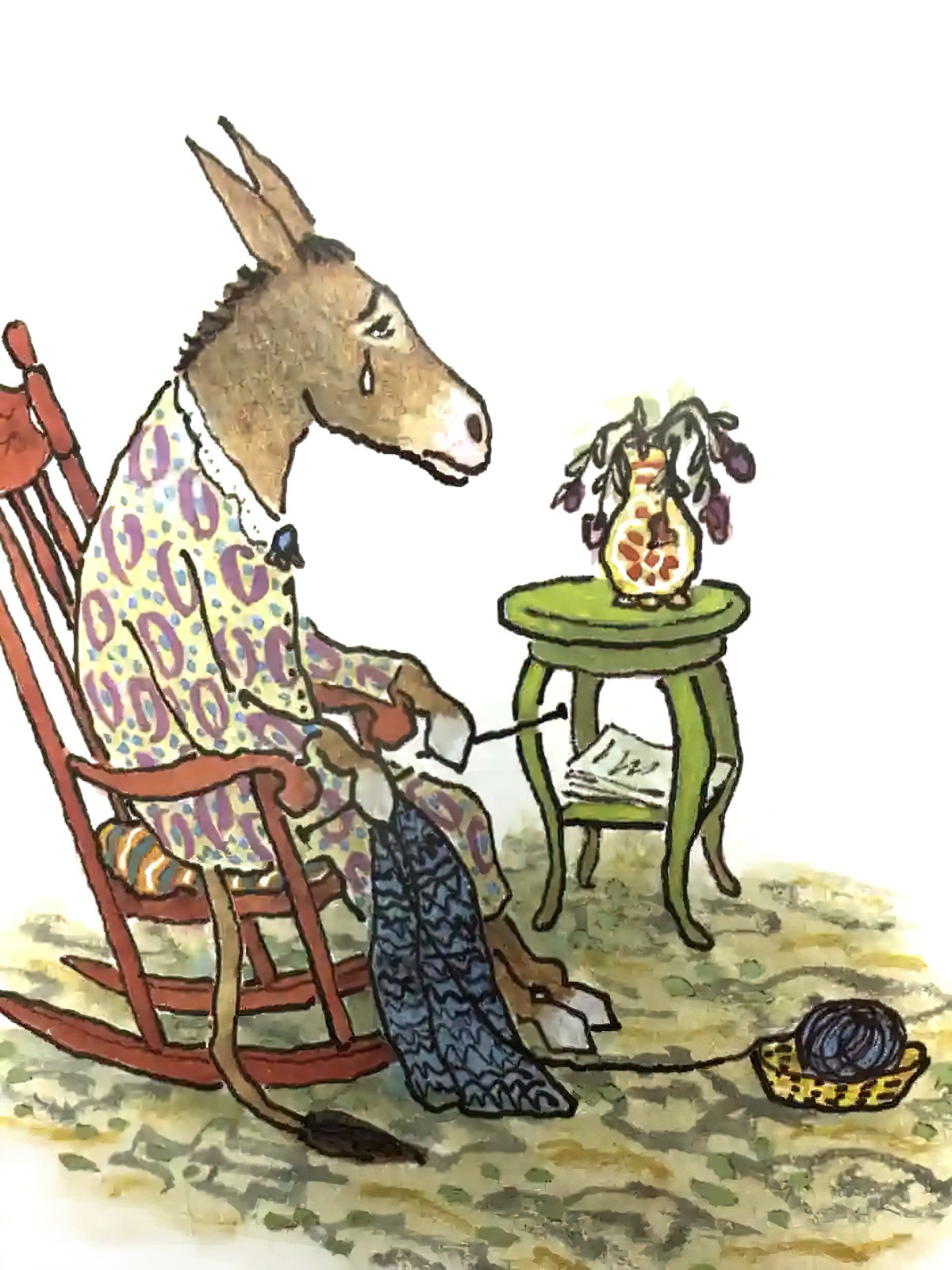
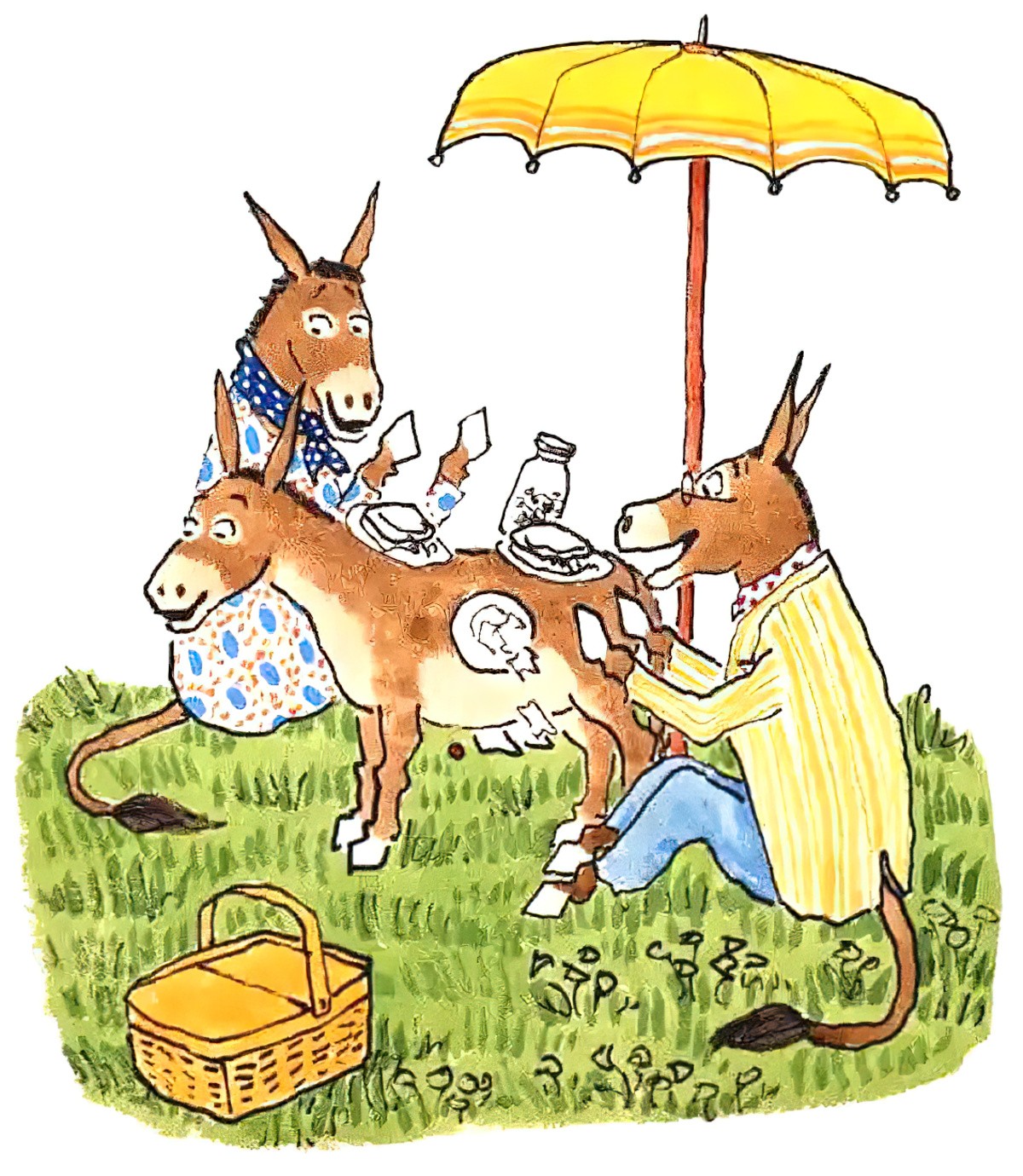
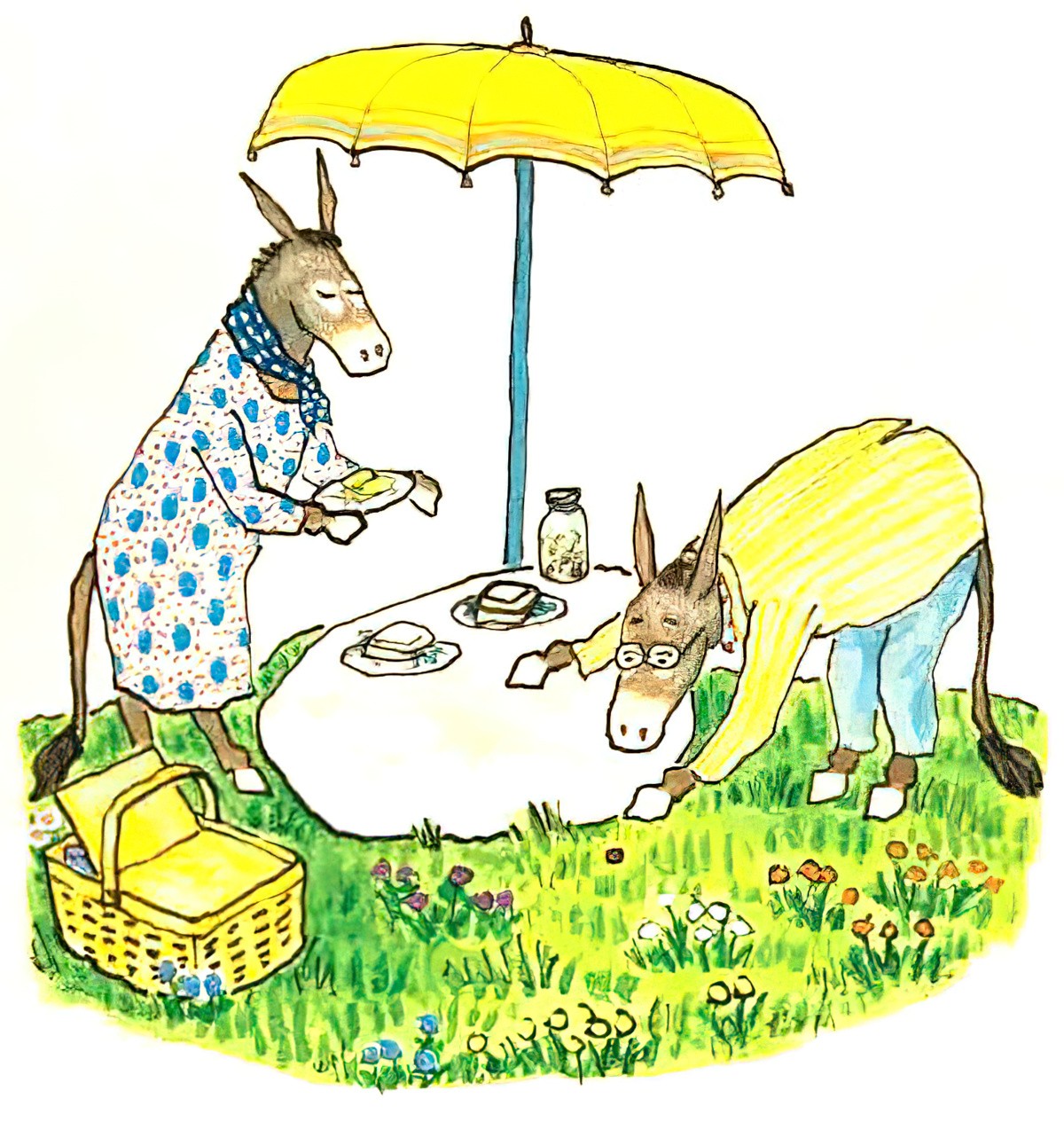
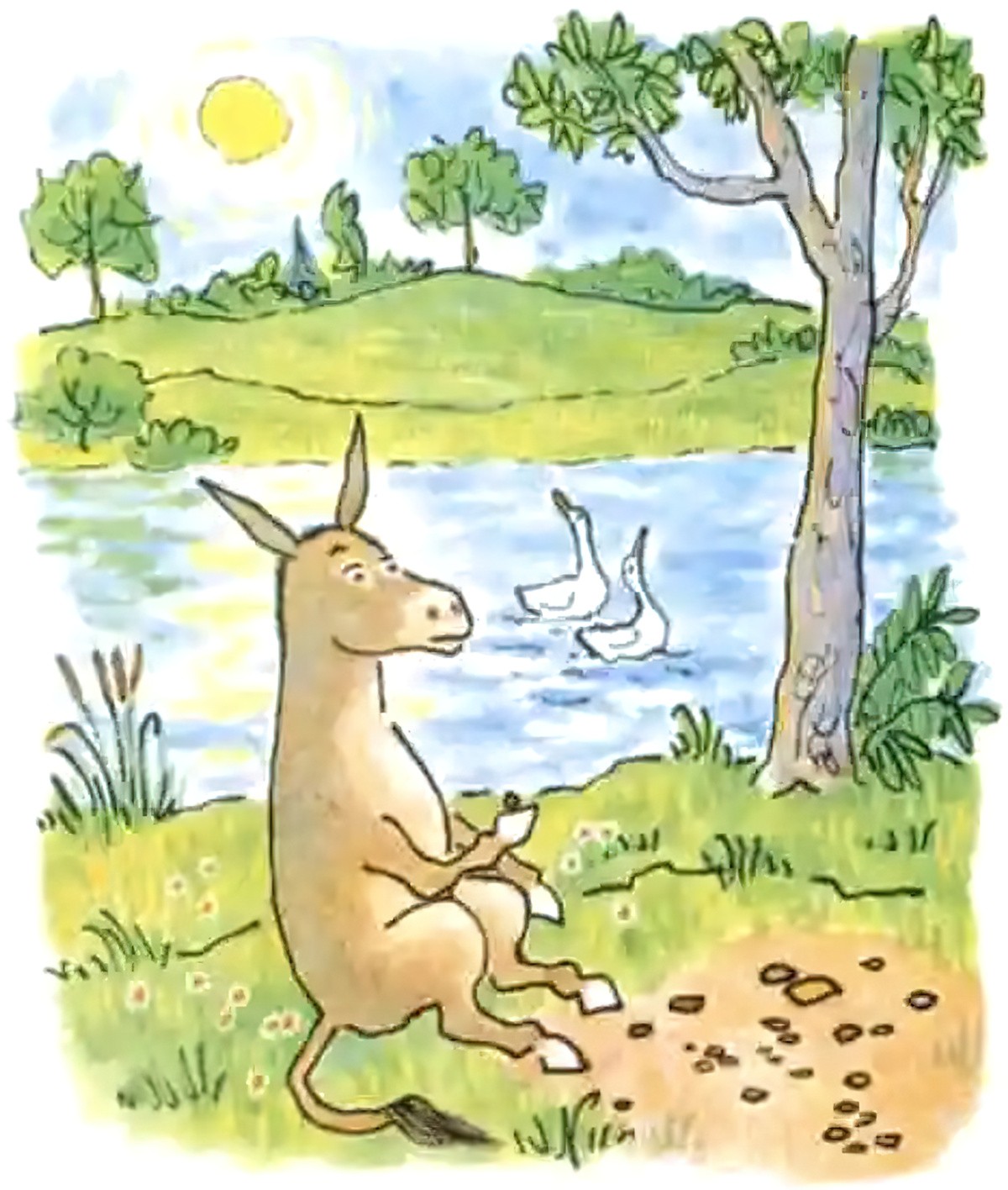
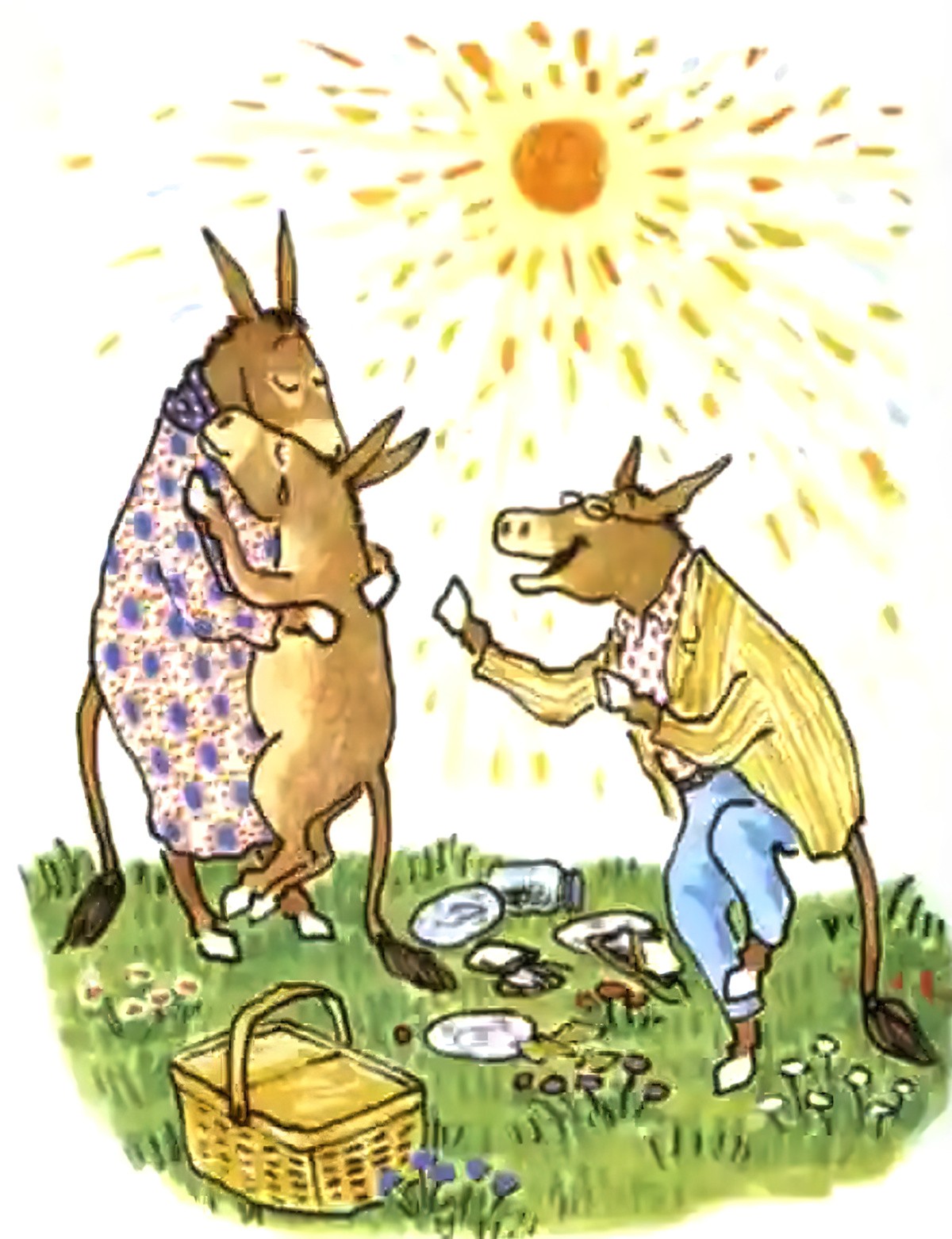
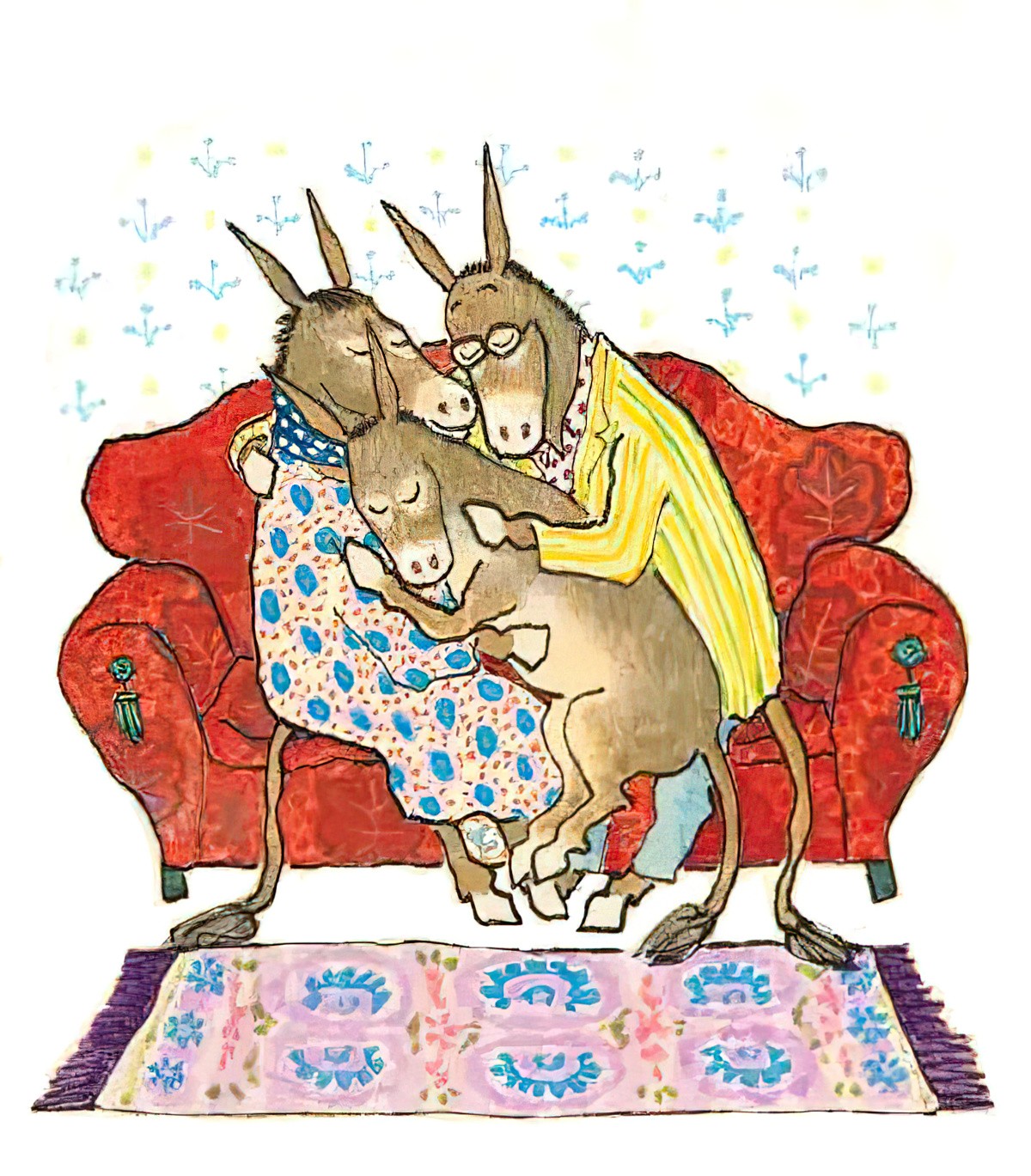
FURTHER READING
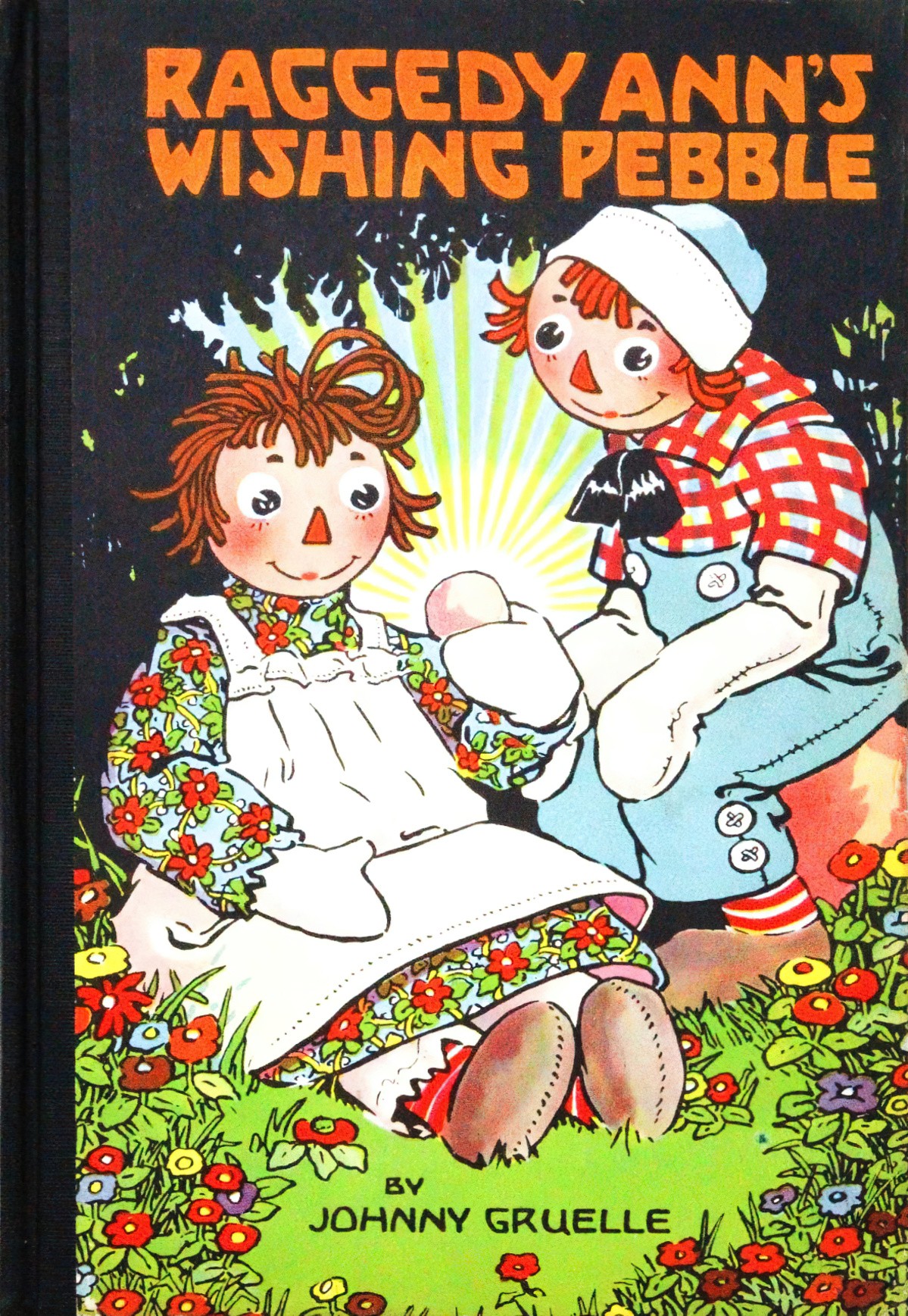
Another picture book featuring an anthropomorphised donkey and a happy ending is The Story of Edward by Philippe Dumas published in 1976. The original title was Histoire d’Edward.
